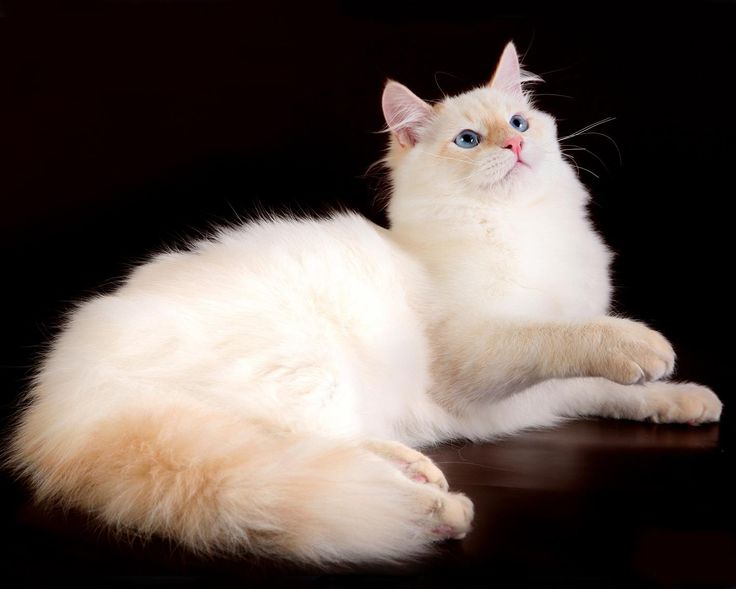This published a description of the breed of the Siberian cat. The information posted here will help you learn to care for cats of this breed.
Contents
- Siberian cat: History of occurrence
- Siberian cat: description of character
- Advantages and disadvantages of the Siberian cat
- Siberian cat: appearance
- Siberian cat: wool color, photo
- Siberian cat: weight
- Siberian cat: care
- Siberian cat: food
- Siberian cat: Diseases
- Siberian cat: breeding rules
- Siberian cat breed standards
- Video: Siberian cat. All about Siberian cats. Features of breed and care. The nature of the Siberian cats
If you want to have a Siberian cat at home, but you don’t know what its advantages and disadvantages are and how it behaves, read the article. What colors can there be a Siberian cat and how can it get sick? What should be proper care, nutrition and breeding of this breed? How is the propagation cycle of the Siberian cat? Look for answers to these questions below.
Siberian cat: History of occurrence
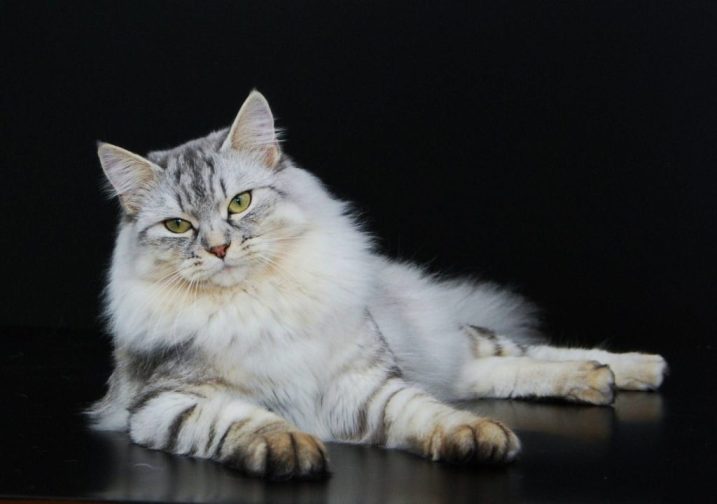
The history of the breed of the Siberian cat is definitely not described. It is known that the breed was created for a very long time, probably as a result of crossing local cats from Siberia with domestic cats brought by settlers or exiles.
Interesting: This breed is created naturally, without human influence. There was no breeding in Russia, the cats were half wild, and their number was not controlled.
It is believed that the history of the Siberian cat in Russia began back in the eleventh century as a breed for protection from mice and rats. These cats were often on the street and at home, and coped with their duties perfectly. The story of the breed is very interesting:
- The breed reached other countries only when the borders were open and trips became more frequent.
- In the nineteenth century, cats reached Europe and were taken to an exhibition in a crystal palace in London in 1871.
- This was noticed by the initiator of the movement of cat lovers Harrison Weir and described in the book "Our Cats and All About them."
- The text was published in 1889 and is considered the first documented confirmation.
Interesting: At the end of the 20th century, the features of this breed were studied in detail, and more and more people wanted to have this cat. The first club of Siberian lovers called "Kathoil."In 1987, the first exhibition of Siberian cats was held in St. Petersburg (then Leningrad).
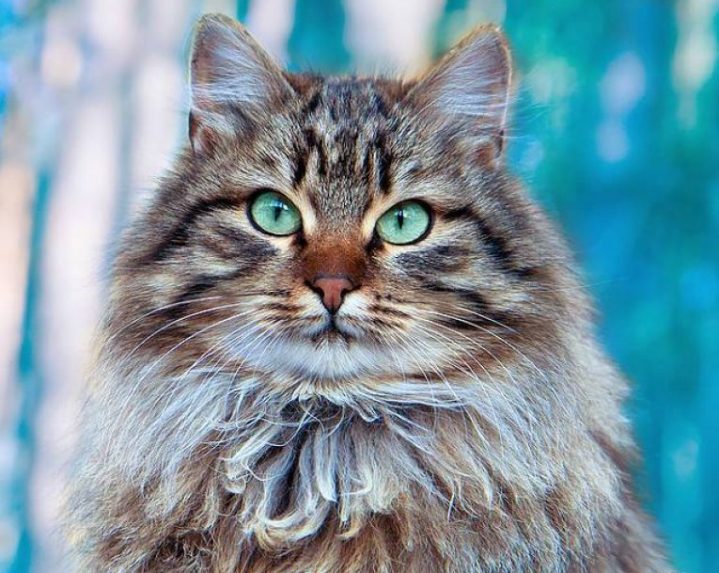
In 1990, Elizabeth Terrel, a breeder from Persia, exchanged 4 Persian cats for 3 Siberian cats. They were the first cats of this breed in America. In Britain, the breed appeared in 2002.
The Siberian cat was originally registered in 1991, and in 1997, the International Association of Cat Products (TICA) recognized its full -fledged breed. A year later, the same was made by the International Cat Federation (Fife).
Siberian cat: description of character

Siberian cats are pets that require close contact with people. Especially at a young age they need a lot of attention. They, as a rule, are bold, curious and love all kinds of entertainment. They often try to jump on furniture. What is important, they get along well with children and other animals. This is what the real nature of the Siberian cat or cat manifests itself:
The Siberian cat does not like to be alone:
- This breed is also characterized by emotionality and friendly attitude.
- The cat is tied to the owner and loves him.
- They have a sharp need for contact.
- Cats often follow the owner step by step, but they do not need to touch him or sit on his knees.
- They love to welcome the owner when he comes home.
- They love people and are not ashamed to show them their feelings.
He is also very smart and independent:
- He quickly adapts to new conditions.
- The educational process is fast and easy.
Siberian cat moves a lot:
- She is energetic and active.
- Most often, she rests at heights, on the highest cabinets and shelves.
- Therefore, it is worth buying special platforms that will help them climb, and exclude the possibility of breaking small furniture.
Siberian cats communicate through meowing and purring:
- They have a large range of voice - from high to deep and melodic.
Such cats move with grace, despite the large size. They are also agile and mobile throughout their lives. The Siberian cat loves water, even when it comes into contact with it during bathing. She is patient, forgives and pleases the children.
Advantages and disadvantages of the Siberian cat

The Siberian cat is not suitable for everyone, and it is worth checking whether the breed is suitable for you. To do this, you need to know the advantages and disadvantages of the Siberian cat. Pay attention to each item so that later the behavior of your new friend is not a surprise.
The disadvantages of the Siberian cat:
- Kits need a lot of attention.
- The cat is stubborn.
- She loves to jump on cabinets and can break furniture.
- He does not like loneliness.
- It independently decides when it can be stroked.
- He does not like great physical contact.
- It produces many sounds in different colors - a loud roar, calm purr and so on.
- Many sinks.
- He does not like combing.
- Requires great care.

Advantages of the Siberian cat:
- Beautiful, stately and majestic.
- Not aggressive.
- Affectionate and sociable.
- Walks the owner after returning him home.
- Easy to get along with other animals.
- Ideal for children, loves to play with them.
- Learns quickly.
- It can live great at home and in the courtyard of the house, if it is private possessions.
- Loves water.
- An ideal mice hunter.
As you can see, the Siberian cat has many advantages, but there are drawbacks. If the disadvantages of this breed do not scare you and even many of them turn into pluses, then such a breed of cats is suitable for you.
Siberian cat: appearance

The Siberian cat has a beautiful, brilliant and thick fur. Here is a detailed description of the appearance of a Siberian cat or cat:
- The breed is distinguished by a well -built body, a convex forehead, a triangular head and clearly expressed cheekbones.
- The ears of the Siberian cat have convex hair bundles inside, they are wide and tilted forward.
- Big eyes usually have green or amber color, they are obliquely set.
- The tail is large and very fluffy.
- The Siberian cat can have different colors - uniform or striped.
This breed has very beautiful wool colors. Many owners have chosen a cat for this distinctive feature. Read more below.
Siberian cat: wool color, photo

The Siberian cat can have different coloring. Each variety demonstrates slightly different character traits and shows different behavior. It is worth taking this into account before choosing one or another color so that the animal corresponds to the lifestyle and preferences of the owner.
The FIFE federation has identified 9 colors of the Siberian cat:
- Black and blue smooth (without stripes)
- Black, blue and white
- Black, blue, blue-gold
- Black, blue with white stripes, gold and black
- Red, cream, black and blue turtle, redhead
- Red, cream, black, blue tortoise, gold and white
- Silver and smoke
- Silver, smoky with white
- White
Each color can have beautiful shades. You will never find two identical in color and color of Siberian cats. This is the charm of this breed. Look below the photo of Siberian cats and varieties of their color:

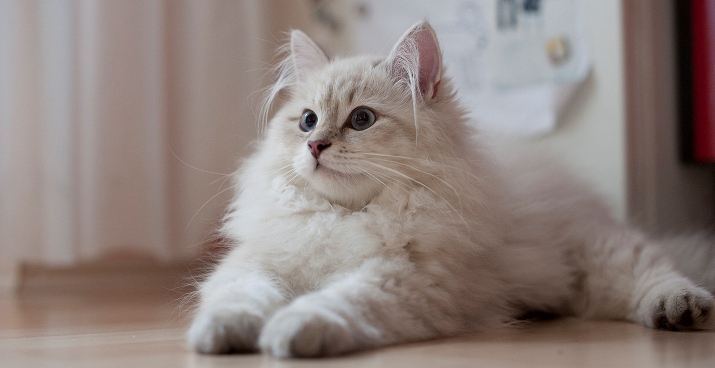
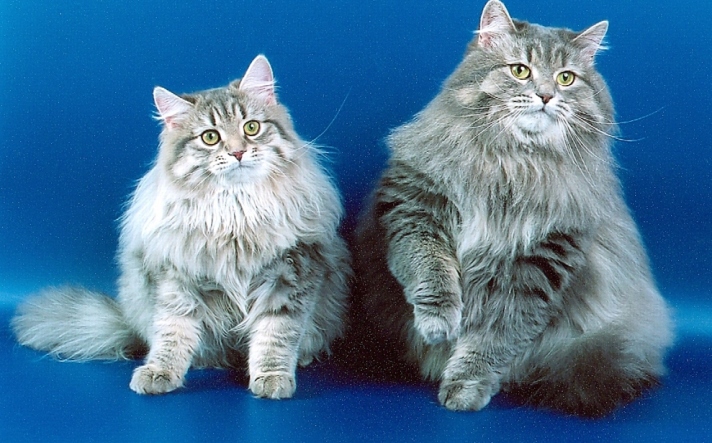
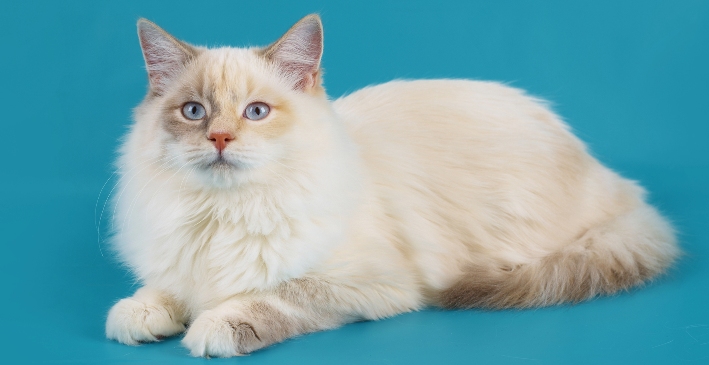
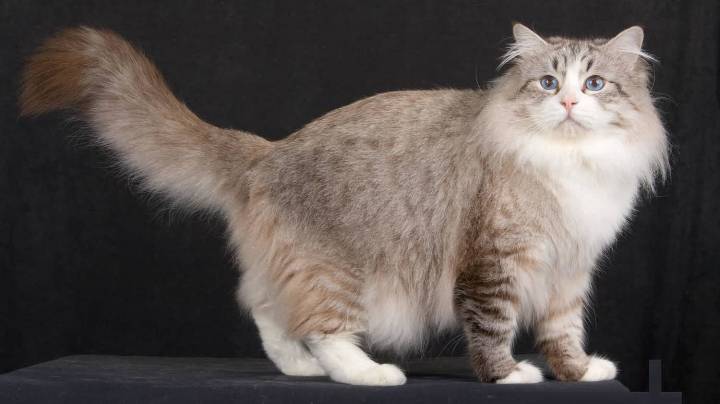
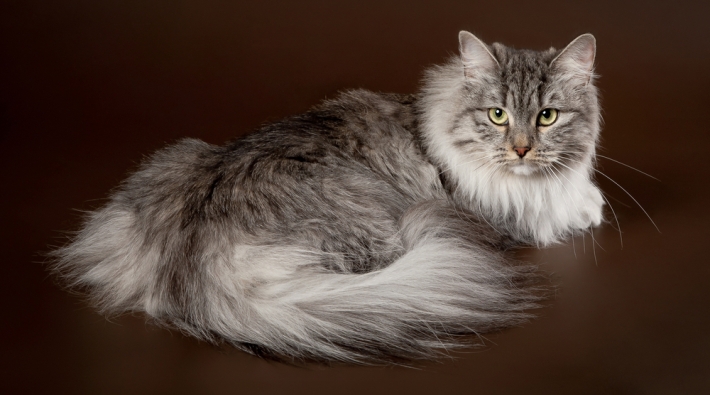

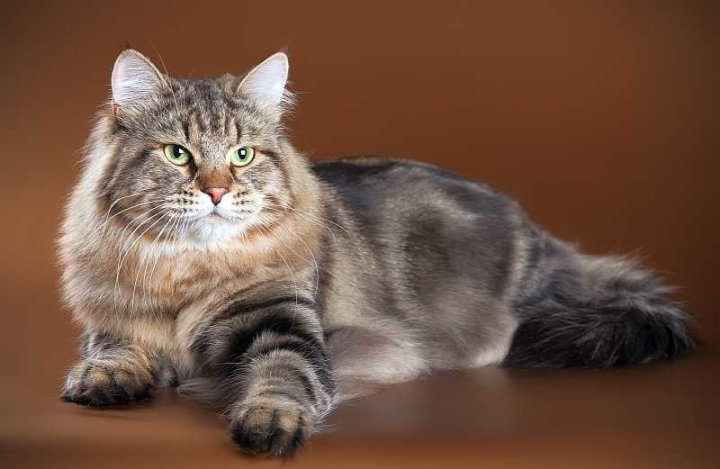
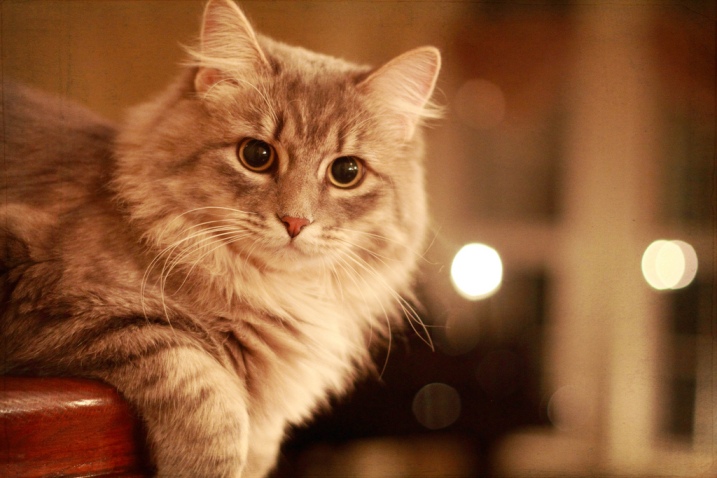
Siberian cat: weight
The Siberian cat is one of the most powerful and muscular cats. You must monitor its weight and avoid overfeeding. Males must weigh 7-8 kg, and cats - 4-5 kg.
It is worth consulting on this issue with a veterinarian who will appreciate the correct weight for a particular cat. It should be remembered that the Siberian cat weighs more every year. It stops growing and reaches complete physical maturity only after three or four years.
It's important to know: Overweight is harmful to any animals and can negatively affect the health of your pet, it is worth paying attention to and not overfeeding.
Siberian cat: care
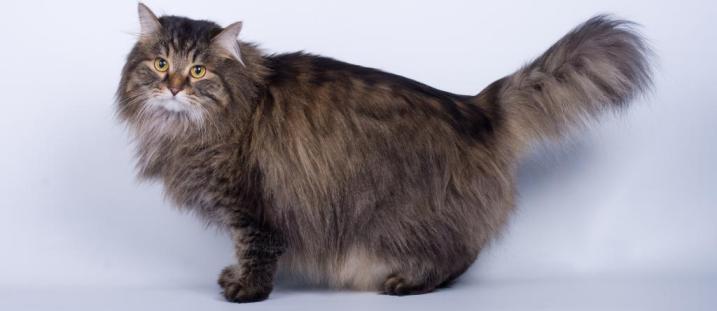
Siberian cat care is very simple. It is important not to forget to comb the wool 1-2 times a month, and during molting (10 days)-every day. Also remember the following:
- Baths It should be repeated from time to time, but they are not a problem, because Siberian cats love water.
- Claws - If a Siberian cat lives in the house, trim the claws for him.
- Teeth - It is recommended to take care of your teeth and regularly brush them.
- Eyes - From time to time it is useful to rinse your eyes with a cotton swab moistened in boiled water or physiological solution.
Important: Do not forget that the Siberian cat is free -loving. Therefore, release it for a walk at least 1 time in 2 days.
Siberian cat: food

The Siberian cat is picky and needs a balanced, high -quality food. Add vitamins and additives to the menu.
It's important to know: This breed often lives at large. Therefore, try to feed the cat at home so that she does not pick up food on the street.
The food of the Siberian cat must be balanced:
- It is best to serve different types of meat: beef, bird, offal and fish.
- Do not give up cheese and eggs.
- The amount of carbohydrates should be less than proteins.
Remember: The Siberian cat can eat dry and wet food. The latter is safer, because it does not dehydrate and protects against kidney diseases.
It is worth adding Taurin to food. This is an additive that affects the formation of bile salts necessary for digestion and fat absorption. Taurin has a positive effect on the work of the heart and vision, he also participates in the reproductive process. In addition to this, it is worth giving unsaturated fatty acids, and preferably peanutic acid, which is not produced in the liver of cats.
Any of these additives can be bought at a veterinary pharmacy. But first, consult with a specialist on the expense of such top dressing and their dosage.
Siberian cat: Diseases

Siberian cats are of good health. Some of them can only deal with hypertrophy of the heart muscle or hypertrophic cardiomyopathy. The disease affects mainly Siberian cats up to 5 years. Symptoms of the disease:
- Fast fatigue
- Drowsiness
- Dyspnea
- Fainting
If you notice that your cat feels bad, does not play and leads a sluggish lifestyle, urgently consult a veterinarian. At the initial stage of the disease, you can still help a pet. If the disease is running, then it will be difficult to do.
Siberian cat: breeding rules
Before choosing a Siberian cat, you need to carefully look at what type of origin it is. Finding in bad conditions can negatively affect the health of the animal or change its character traits. The future owner is obliged to immerse himself in the study of the breed and know by heart the rules for breeding the Siberian cat.
As well as previous breeders should know everything about the kitten. Ask about the features of this type of breed than to feed and how such a cat will behave in one or another conditions for it. After all, if you want a home cat that you are ready to castrate and it will live constantly in the apartment, and this type of breed provides for being in the will, then such conditions of detention can affect the life expectancy and its appearance of chronic diseases.
This is the main thing: Breeders must be enthusiasts who want the best for cats.
You, as a buyer, have the right to get information on how to care, live and feed a cat that you are going to purchase.
Remember: The frequency of reproduction of individuals is an important question for the health of a cat. There should not be more than 3 litters in 2 years.
Siberian cat breed standards
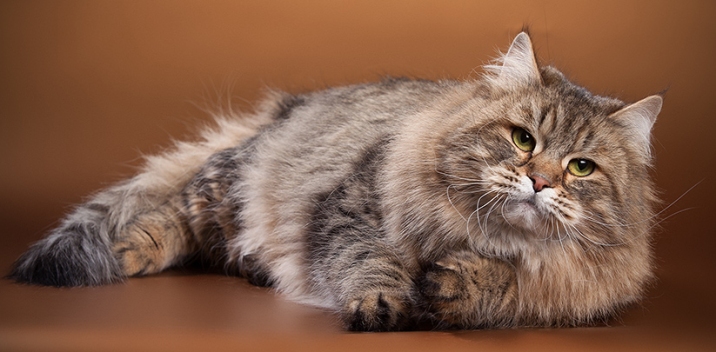
External distinctive features make the Siberian cat unique. Her muscular and stocky body makes the cat graceful and majestic. She seems to know that she is the most beautiful and the best in this world. Here are the standards of the breed of the Siberian cat, which are considered generally accepted for breeders of this breed of the whole world:
- Character: curious, emotional, sociable.
- Activity: Big, loves to climb, play.
- The size: medium or large, muscular.
- The weight: males 7-12 kg, females 4-6 kg.
- Torso: strong and slightly elongated. A rounded silhouette, a wide neck, chest with an oval hole.
- The shape of the head: triangular with a slightly convex forehead, a rounded chin and highly planted and visible cheekbones.
- Ears: large, wide at the base, rounded, with bunches of hairs inside.
- Eyes: large, slightly oval and obliquely set. Most often in green or amber colors.
- Nose: Long, with a slight breakthrough.
- Tail: long and fluffy, narrower in the base.
- Limbs: medium length, the rear ones are slightly longer than the front. The paws are large, hairy.
- Undercoat Depends on the time of the year, in winter it becomes two -time, in the summer it practically disappears.
- Color: There are several color groups.
- Sustainability: high resistance to disease.
- Life expectancy: 12-15 years.
These cats love cleanliness and follow their wool. Therefore, the owners can only comb sometimes and bathe from time to time. The Siberian cat will be your faithful friend. He will love children with love and will always react to your attention to him with a beautiful melodic purr.
Video: Siberian cat. All about Siberian cats. Features of breed and care. The nature of the Siberian cats

